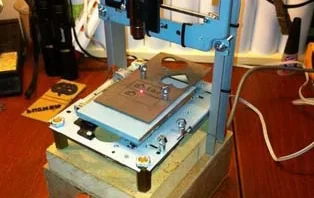Application of CNC milling technology in parts manufacturing
Introduction
Computer Numerical Control (CNC) milling technology has revolutionized the field of parts manufacturing, offering precise and efficient solutions for producing complex components. This article aims to discuss the various applications of CNC milling technology in parts manufacturing, highlighting its advantages and impact on the industry.
Increased Precision and Accuracy
One of the primary benefits of using CNC milling technology in parts manufacturing is the unparalleled precision and accuracy it offers. Unlike traditional manual milling methods, CNC milling utilizes computer software to control the movement of the cutting tools with high precision, resulting in consistent and accurate dimensions of the final product. This level of precision is crucial in industries such as aerospace and automotive, where even the smallest deviations can have significant consequences.
CNC milling technology also allows for the production of intricate designs and shapes that would be challenging or impossible to achieve manually. With advanced software and multi-axis machines, manufacturers can create complex geometries, intricate patterns, and smooth curves with ease. The ability to produce such intricate parts opens up new possibilities for innovation and enables the manufacturing of highly specialized components.
Enhanced Efficiency and Productivity
Another advantage of CNC milling technology in parts manufacturing is the increased efficiency and productivity it brings to the production process. CNC milling machines are capable of working continuously without the need for breaks or rest, resulting in higher production rates compared to manual methods. Additionally, the use of computerized programs allows for rapid setup and changeover times, minimizing downtime between different production runs.
Furthermore, CNC milling technology eliminates the need for manual intervention during the machining process. Once the design is programmed into the system, the machine can execute the instructions with minimal supervision. This reduces the risk of human errors and improves overall production efficiency. Moreover, CNC milling machines can perform multiple operations simultaneously, such as drilling, tapping, and milling, further increasing productivity and reducing the overall manufacturing time.
Cost-Effectiveness and Flexibility
In addition to precision and efficiency, CNC milling technology offers cost-effectiveness and flexibility in parts manufacturing. While the initial investment in CNC milling machines may be higher compared to traditional milling equipment, the long-term benefits outweigh the costs. CNC milling machines require minimal manual labor, reducing the need for a large workforce and associated labor costs. Moreover, the ability to automate repetitive tasks reduces the chances of errors and rework, saving both time and money for manufacturers.
CNC milling technology also provides flexibility in terms of design modifications and customization. With computerized programming, manufacturers can easily make changes to the design without the need for physical alterations to the machine or tooling. This flexibility allows for quick adaptation to changing customer requirements and facilitates rapid prototyping and iterative design processes.
In conclusion, CNC milling technology has revolutionized parts manufacturing by offering increased precision, enhanced efficiency, and cost-effectiveness. Its applications in various industries have opened up new possibilities for creating complex components while improving overall productivity. As technology continues to advance, it is expected that CNC milling will continue to play a crucial role in shaping the future of parts manufacturing.
.webp)

